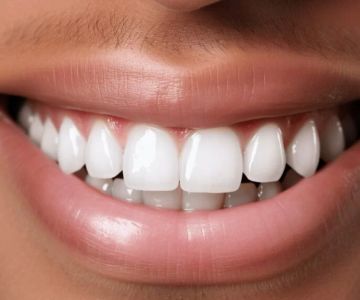Understanding the Process of Tooth Decay
Tooth decay is a complex process that begins with the bacteria in your mouth. These bacteria turn the sugar from the food and drinks you consume into acids, which then attack the enamel and dentin of your teeth. Plaque forms as a combination of bacteria, acid, food debris, and saliva, adhering to the teeth and causing damage over time.
Preventive Measures for Tooth Decay
Maintaining a healthy diet is crucial. Reduce the intake of sugary and acidic foods and drinks. Choose foods rich in calcium and vitamins for stronger teeth. Drinking plenty of water, especially fluoridated tap water, helps. Brushing your teeth at least twice a day with fluoride toothpaste and flossing once a day are essential for good oral hygiene. Don't forget to use mouthwash for added protection. Dental sealants on the back teeth can prevent a significant portion of cavities.
Special Considerations
For children, parents should be vigilant. Children under the age of 2 should use fluoride toothpaste only as directed by a doctor or dentist. Encourage good oral habits from an early age. People with certain medical conditions, such as those that cause a dry mouth, or those taking medications that affect salivary glands, need to be extra careful.
Treatment and Awareness
Early detection and treatment of tooth decay are vital. Regular visits to the dentist for check-ups and X-rays can catch problems in their early stages. If decay is detected, prompt action like fillings can prevent further damage. It's important to be aware of common myths and misconceptions about tooth decay. For example, baby teeth are important and should be cared for, and ignoring a toothache doesn't mean the problem has gone away.
Oral Health Disparities and Statistics
Not everyone has the same risk of getting cavities. Factors such as income, ethnicity, and education level can play a role. Half of children aged 6 to 9 have had at least one cavity, and the situation varies among different age groups and demographics. Fluoride varnish, fluoridated tap water, and daily brushing with fluoride toothpaste can significantly reduce the risk of cavities.
Resources and Recovery
If you need low-cost dental care, the U.S. Department of Health and Human Services provides information on where to find it. Many dental schools also offer clinics with affordable options.
Tooth decay is a common problem, but with the right knowledge and preventive actions, you can keep your teeth healthy and avoid cavities. By following a proper diet, maintaining good oral hygiene, and seeking regular dental care, you can significantly reduce the risk of tooth decay and enjoy a lifetime of a beautiful smile and good oral health.

 Westgate Dental Arts
Westgate Dental Arts Coventry Family Dental
Coventry Family Dental Familia Dental
Familia Dental Dr. Daniel S. Fife, DDS
Dr. Daniel S. Fife, DDS Dentistry At Suburban Square: Michael I. Wollock, DMD
Dentistry At Suburban Square: Michael I. Wollock, DMD Comfort Care Dental
Comfort Care Dental The Importance of Oral Health Education During Pregnancy for a Healthy Pregnancy
The Importance of Oral Health Education During Pregnancy for a Healthy Pregnancy Why Skipping Dental Checkups Can Lead to Bigger Oral Health Problems
Why Skipping Dental Checkups Can Lead to Bigger Oral Health Problems Advantages of Porcelain Dental Restorations
Advantages of Porcelain Dental Restorations Best Tips for Brushing Your Teeth Properly for Healthy Gums: Essential Techniques for Oral Health
Best Tips for Brushing Your Teeth Properly for Healthy Gums: Essential Techniques for Oral Health How Can Diabetes Cause Tooth and Gum Problems? Preventing and Managing Oral Health Issues
How Can Diabetes Cause Tooth and Gum Problems? Preventing and Managing Oral Health Issues Healthy Habits for Promoting Good Oral Health and Hygiene: Tips for a Healthy Smile
Healthy Habits for Promoting Good Oral Health and Hygiene: Tips for a Healthy Smile